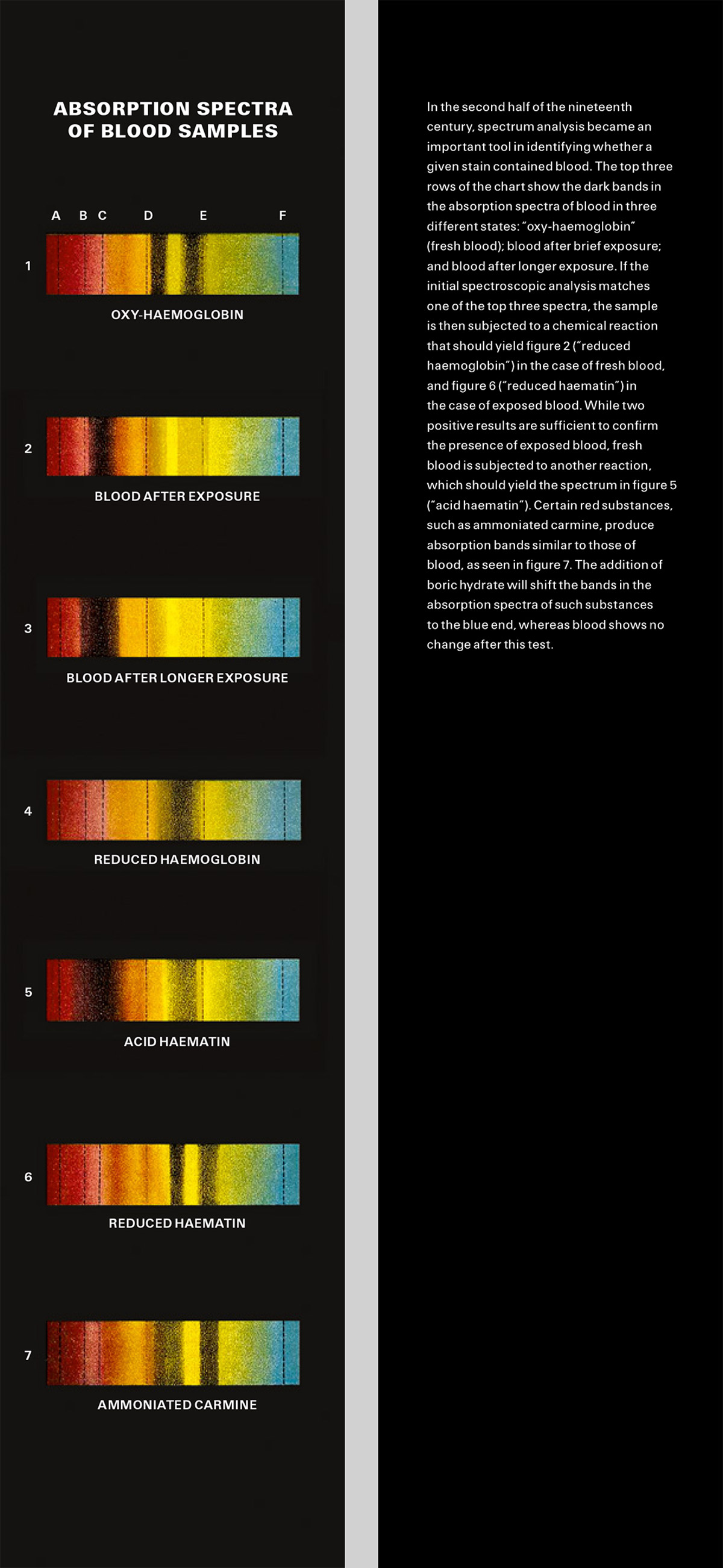Fall 2011
Bookmark / Absorption Spectra of Blood Samples
Out damned spot!

Spotted an error? Email us at corrections at cabinetmagazine dot org.
If you’ve enjoyed the free articles that we offer on our site, please consider subscribing to our nonprofit magazine. You get twelve online issues and unlimited access to all our archives.